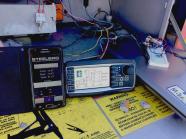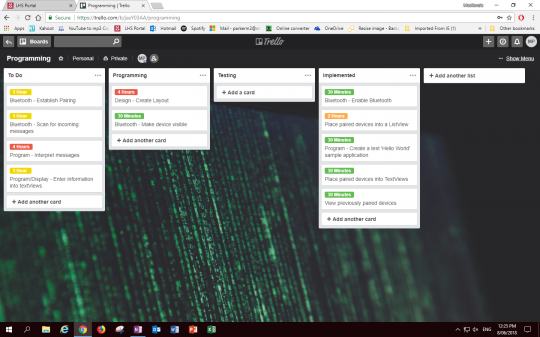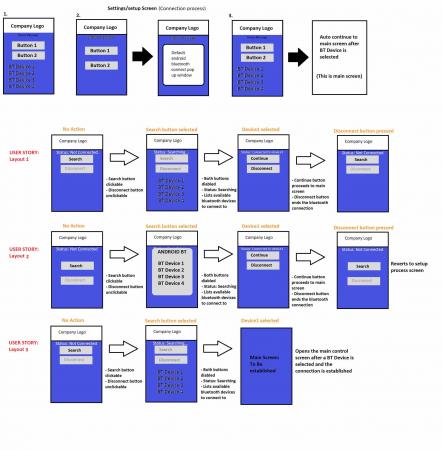Outstanding scholarship in technology: STEELBRO Bluetooth application
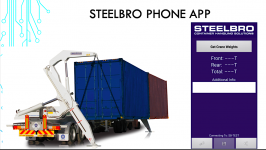 Container weight Bluetooth application
Container weight Bluetooth application

MacKenzie Parker developed a Bluetooth application to retain and share information on container weight for STEELBRO.
The ability to retain and share container weight information would mean STEELBRO is ready for proposed international safety convention changes.
This scholarship project demonstrates outstanding planning for practice and technological modelling.
Identifying a scholarship project idea
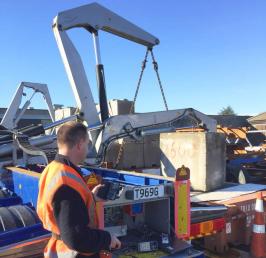 Requirements
Requirements

A scholarship project needs to:
- focus on an open-ended problem with no known solution
- allow the student to access all three strands of the technology learning area – technological practice, nature of technology, and technological knowledge.
Digital technologies teacher Ruth Davey advises students to begin exploring project ideas in year 12 if they want to do scholarship in year 13.
MacKenzie's project
STEELBRO is a global sidelifter production company based in Christchurch. A sidelifter is a specialised vehicle or semi-trailer used to hoist and transport containers over long distances.
MacKenzie's father works at the company and suggested that developing a solution to the problem of retaining and sharing container weight information to meet a possible new Safety of Life at Sea (SOLAS) convention could suit a scholarship project.
A meeting with MacKenzie, his father, and the STEELBRO General Manager, Peter Dobbs, confirmed that the company was keen to support MacKenzie for this scholarship project.
SOLAS is an international treaty concerning the safety of merchant ships. SOLAS had proposed a new convention that would require companies to share information on the weight of containers. This would help freight companies know exactly how to stack the containers on ships to ensure ship stability. Unstable stacks of containers may fall on a worker and / or cause damage to the goods and the ship.
Developing a brief
Investing time in the initial brief
MacKenzie communicated closely with the stakeholders, listening carefully and putting a lot of thought and research into the brief. He developed a concise initial brief and specifications for the project that were clearly documented in the scholarship report.
The brief
Conceptual statement
Using hardware, software, or a combination of both, produce an outcome which can gather, store, and share accurate container weight data from STEELBRO SMARTlift™ crane systems.
Specifications
The final product must:
- withstand harsh environmental conditions and rough treatment
- be a legal solution in every country worldwide (STEELBRO is a global company)
- obtain and share correct container weights as per the SOLAS requirements
- provide and obtain non-manipulated versions of the weights shared
- represent STEELBRO’s professionalism and brand image
- be cost effective and low maintenance.
Project management
Project management tools
A major highlight for MacKenzie was using project management tools to work through the project and solve problems. He still uses the thinking behind this planning work in multiple ways in his everyday life and as he develops his next application.
The project management in this scholarship submission demonstrates the knowledge, skills, and understandings described in the level 8 planning for practice indicators of progression.
Choosing a project management methodology
MacKenzie considered Waterfall and Agile approaches to project management and selected Agile. MacKenzie knew that software development is rarely linear and that STEELBRO would need opportunities to review the brief if a particular approach did not work. Agile allows for changes at critical points when developing a product for a company.
Choosing a planning tool
Key to developing an understanding of planning tools were the class industry visits and visitors. Teacher Ruth Davey arranged visits to software developers from eStar, an online retailer, and Orion Health.
MacKenzie chose Trello, an online Kanban board creator, with milestone dates, labels, and column headings that allowed for personalisation. He found two weekly sprints an effective way of moving the project forward. Sometimes these did not work for completing tasks in the time planned. This became a great learning experience in accurate job sizing.

Technological modelling
Many forms of technological modelling
Technological modelling exists in many forms. For example, thinking, talking, drawing, physical mock-ups, and computer aided simulations. Functional modelling and prototyping are both important types of modelling to ensure a successful outcome.
This scholarship submission is outstanding in the use of many types of technological modelling. It clearly demonstrates the use of technological modelling to make informed, responsive, and defensible design and development decisions (level 8 indicators, technological modelling).
Functional modelling
After developing the initial brief, MacKenzie carried out functional modelling through research and discussion with the stakeholders (both face to face and email) in order to make decisions on:
- the best system to use to provide the data (the final decision was a mobile application )
- the specifications for the application
- the preferred form of communication (Bluetooth was chosen as the preferred option)
- the best type of Bluetooth chip
- the development environment for the program (Xamarin was the preferred option for multiple reasons, including that there was no licence fee for educational purposes).
Screens
The screens needed to reflect the company branding, provide the agreed information on weight per container, and address user requirements.
MacKenzie used a visual story and a flowchart diagram to model the application screens.
This form of technological modelling allowed for robust discussions and an efficiency in decision making when liaising with his stakeholders.
Establishing a connection between the two devices
MacKenzie programmed the application and established a connection between the two devices – the user's phone and the sidelifter.
This proved to be the most challenging aspect of the project. Extensive use of annotation in code (another form of technological modelling) helped him to resolve the multiple issues.


Prototyping
A prototype is the first version of fully completed technological outcomes. Prototyping is also a form of technological modelling. A prototype was tested in situ using five different Android devices to check the application operated successfully.
Communication with stakeholders
Clear and concise communication
This project is an outstanding example of clear and concise communication with stakeholders. MacKenzie was introduced to the key stakeholders at the beginning of the project. He learnt their roles in the company and how they could assist with his project. Having his father as a key stakeholder was also helpful. Joy Taylor in marketing provided information on user requirements and company branding.
MacKenzie found clear and concise emails plus some face to face communication helped move the project forward to meet the stakeholders requirements. He visited every three to four weeks to discuss the project progress with key people.
Project completion and feedback
At the completion of the project MacKenzie provided morning tea and carried out a live, simulated, application demonstration (with a backup demonstration video if needed) to STEELBRO. This allowed the company to see the product in action and ask questions about application future developments.
Download his presentation:
STEELBRO application presentation (PDF, 8 MB)
Feedback from STEELBRO was positive.
You have approached the project in a very professional manner. You have kept us informed throughout and provided detailed information to enable us to make decisions at critical points.
Peter Dobbs, CEO, STEELBRO
MacKenzie has a particular interest in psychology, and how people think, feel, and communicate. He has gone on to study computer science and psychology at the University of Canterbury.

